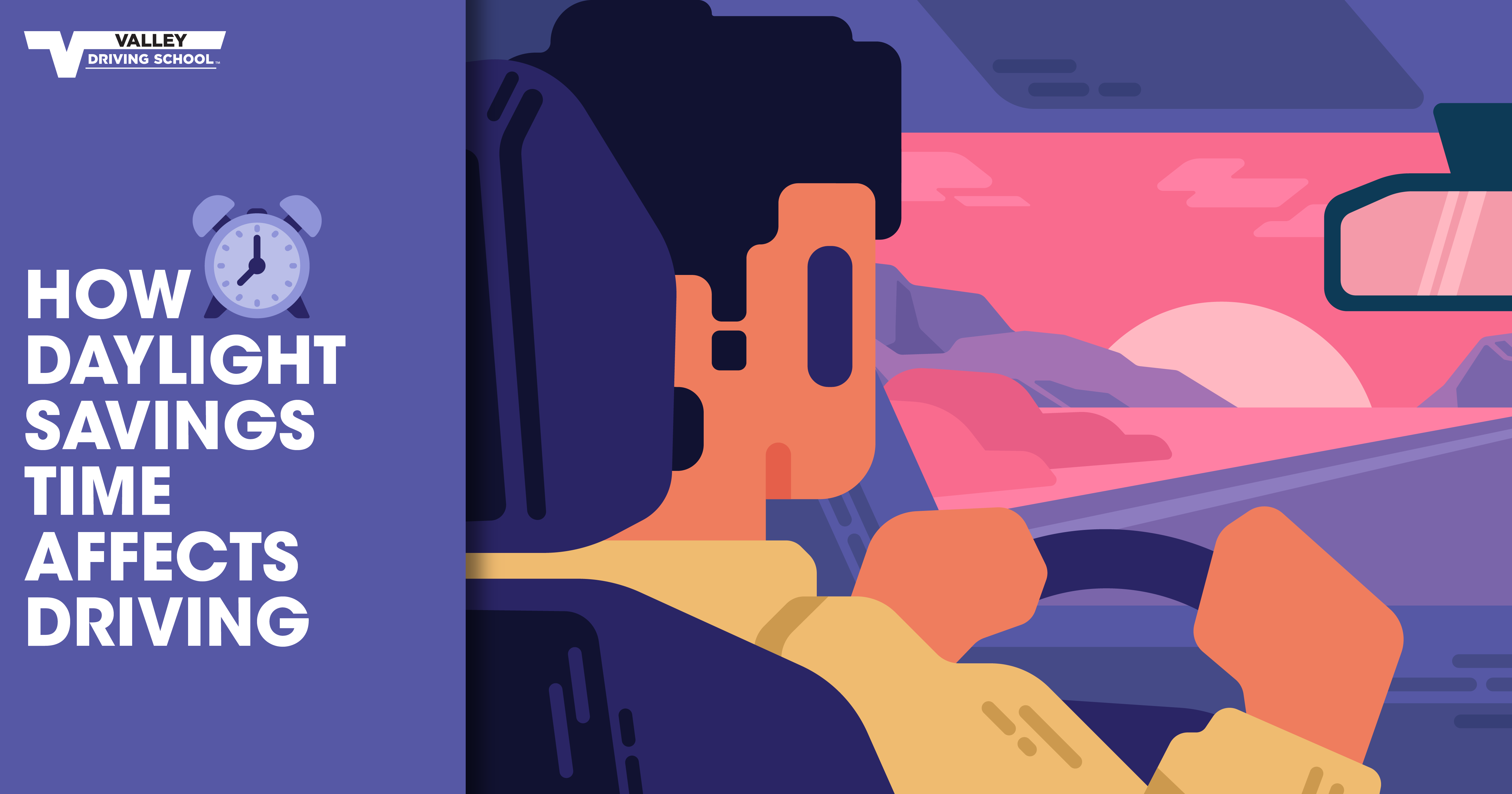As we spring forward or fall back an hour during daylight saving time, it is important to consider how this change in time might affect your driving. This article will take a look at the potential effects of daylight saving time on your visibility, fatigue, weather conditions, routines, and the likelihood of traffic accidents.
How does a time change affect my driving?
Daylight saving time can have an effect on you that may not be noticeable until you’re behind the wheel and responsible for a large piece of machinery! Our routines can also change when there's a time shift, and changing your daily routine can have an impact on your driving safety, especially when the change is sudden and significant. Our bodies need time to adjust, and we may find ourselves running late for work or school, causing us to be in a hurry, which can impair our driving ability. Be extra cautious during these times and try to establish new, healthy patterns that give you plenty of time to get ready in the morning safely.

Sleeping habits take a hit anytime there is a time change; whether you’ve lost an hour of sleep in the spring, or spent too much time sleeping in the fall. These sleeping habit changes can affect your body clock, leaving you feeling fatigued and groggy throughout the day. As a driver, this can seriously affect your reaction times and your ability to make wise decisions on the road. The change of time can lead to a temporary disruption of circadian rhythms, making it harder for you to remain alert while behind the wheel.
The circadian rhythms regulate various bodily functions, including sleep-wake cycles, hormone production, and body temperature. When daylight saving time disrupts this delicate balance, it can have significant implications for our driving safety. The time change can disrupt the production of melatonin, the hormone that regulates sleep, and reduced melatonin levels can lead to difficulty falling asleep and staying asleep, leaving us feeling tired and groggy. This isn’t helpful, especially when paired with our body temperature changing and promoting sleepiness. A time shift can interfere with this natural rhythm, making it harder to stay alert, especially during the day. When sleep-deprived, our cognitive abilities, such as attention, reaction time, and decision-making, are compromised. This can lead to slower response times, reduced awareness of surroundings, and increased risk-taking behavior behind the wheel.
Research suggests that the onset of daylight saving time may contribute to an increase in traffic accidents. One study from 2014 found that there was an eight percent increase in accidents on the Monday following daylight saving time compared to other Mondays throughout the year. However, other studies have found no difference or even a decrease in accident rates as a result of the time change. Nevertheless, i’s essential always to be cautious when driving and pay close attention to road conditions, especially during times of the year with potential weather hazards.
What can I do to combat time change effects?
Rather than wake-up unexpectedly after the time change and have to wrestle with feeling groggy, approach the time change with gradual adjustments. Instead of making a sudden shift, adjust your sleep schedule gradually in the days leading up to the time change. Before and after a time change, you should prioritize getting enough sleep, and aim for 7-9 hours of quality sleep each night. Create a relaxing bedtime routine and ensure a dark, quiet sleep environment.

You should also stay hydrated and avoid stimulants; try and let your body adjust to the time change without additional chemicals. Dehydration can exacerbate fatigue, so drink plenty of water and fluids throughout the day. This goes hand-in-hand with being mindful of what you’re drinking. You may want to avoid stimulants like caffeine and energy drinks, even if they seem appealing! While caffeine and energy drinks may provide a temporary boost, they can disrupt sleep patterns in the long run. Even with the right precautions, you may feel drowsy while driving. If you're feeling drowsy, pull over to a safe location and take a short nap or engage in a quick energizing activity to refocus.
What are some tips for driving after a time change?

To ensure safe driving during Daylight Saving Time, you should adjust your driving style, check your vehicle's condition, and minimize distractions. Allow extra time for your commute, be patient with other drivers, and avoid road rage or aggressive driving.
Adjust your driving style by being extra mindful of the time change and slow down, increasing following distance, and exercise extra caution at intersections. Drivers could be in a bigger rush than usual, and rushing is already a cause for accidents, not to mention when there is more pressure or chance of running late because of the time change.
Before you hit the road, esure the vehicle you’re taking is in good working condition, especially the headlights, taillights, and turn signals. The daylight will be coming out later and leaving us earlier, so drivers who have gotten used to driving in bright daylight for their commute may now find themselves leaving in the morning in the dark, and returning at the end of the day in the dark as well.
Also be on the watch for changing or adverse weather conditions, as they can vary after a time change and in turn, affect your driving experience. Springtime brings rain showers, fogs, and potholes. Sudden and unexpected weather conditions can arise at any time, which might make it difficult for you to react quickly and safely when on the road. Always be prepared for changes in weather by having appropriate gear in your vehicle and taking extra care on the roads.
-
Drive smart, be proactive, and stay attentive while on the road during daylight saving time. Being aware of issues and knowing how to adapt to them can help ensure that your driving experience is as safe as possible, no matter the time of year. By following a few simple guidelines and paying attention to how the time change affects you, you'll be well equipped to keep your eyes on the road and be in complete control of the wheel during daylight saving time.

